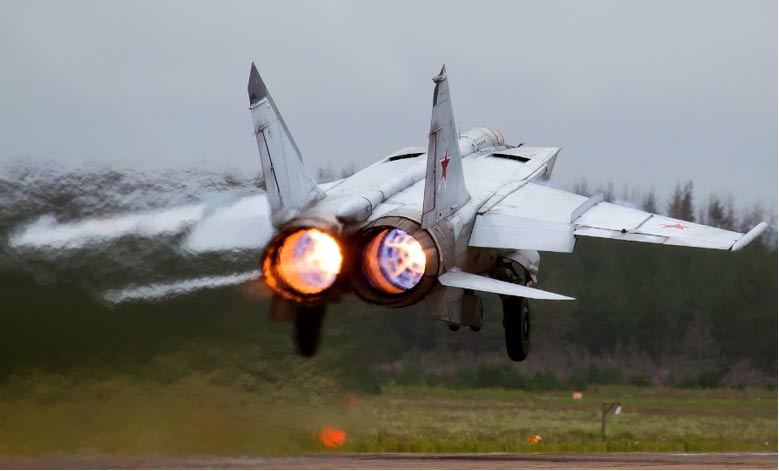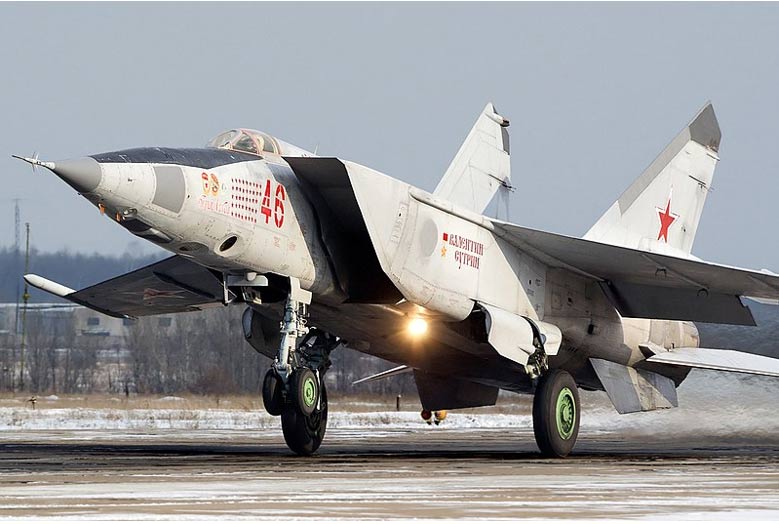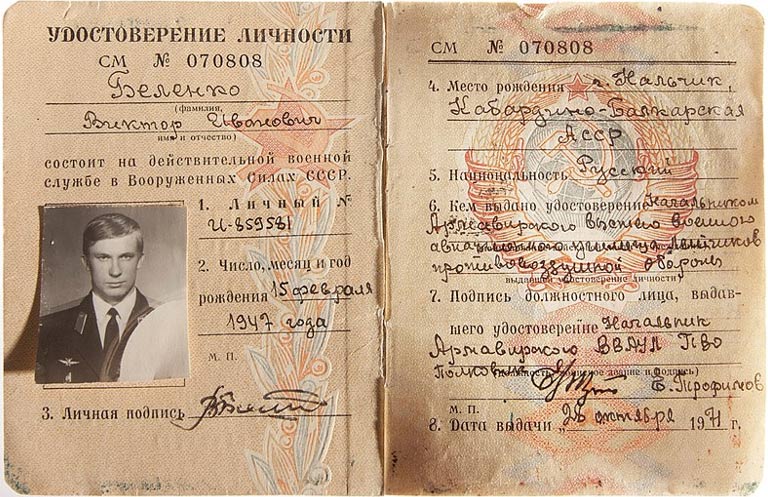Viktor Belenko and his Foxbat: A Gift to the West
 One autumn day in 1976, a Soviet pilot made a decision that helped change the course of the Cold War. The pilot, Viktor Belenko, decided to flee the Soviet Union and head for Japan in the experimental MiG-25 “Foxbat.” Despite being cloaked in secrecy, it was one of the most feared jets of the Cold War era. What little the USA and its allies knew about the Foxbat made them extremely nervous indeed.
One autumn day in 1976, a Soviet pilot made a decision that helped change the course of the Cold War. The pilot, Viktor Belenko, decided to flee the Soviet Union and head for Japan in the experimental MiG-25 “Foxbat.” Despite being cloaked in secrecy, it was one of the most feared jets of the Cold War era. What little the USA and its allies knew about the Foxbat made them extremely nervous indeed.
Belenko’s defection not only provided the West with an invaluable intelligence windfall but also marked a significant propaganda victory in the intense geopolitical rivalry of the time. His actions exposed the true capabilities and limitations of the Foxbat, altering the strategic calculations of the United States and its allies.
- 4 Famous Mysteries in United States History
- The Awful: Vermont Monster That Inspired Lovecraft
Viktor Belenko – Flying Away With The Foxbat
The Mikoyan-Gurevich MiG-25 Foxbat appeared to be a technological marvel when the Americans first got wind of it in the 1960s. The first spy satellite photos the U.S. obtained of the prototype plane were enough to fill America and her allies with a mix of awe and trepidation.
They showed a massive Soviet plane that appeared to be an interceptor with engine intakes the size of small cars as well as almost comically long wings. These engines suggested a plane that could achieve extreme speeds, while the wings hinted that the plane could give America’s McDonnell F-4 Phantom II a run for its money when it came to maneuverability.
When the Soviets unveiled the plane to the public in 1967, full-blown panic set in at the Pentagon. The Soviets had built a monster to rival America’s beloved super plane, the Mach 3.2 Lockheed SR-71. The two modified MiG-25 prototypes- the YE-155R (reconnaissance) and YE-155P (interceptor), set 29 records in the speed, altitude, and time-to-climb categories. The planes could hit 1,852 mph, climb 98.425 feet in under four seconds, and hit an altitude of 123,520 feet.
America and her allies were worried that the interceptor variant would be able to shoot down their Blackbird spy plane and take out their heavy bombers like fish in a barrel. Meanwhile, the reconnaissance variant posed a significant threat due to its capability to gather critical intelligence while flying at altitudes and speeds beyond the reach of most contemporary interceptors and surface-to-air missiles. If their intelligence was correct, the Foxbat had the potential to effectively challenge America’s air superiority, particularly in Europe and the Middle East.
- Project 100,000: The Awful US “Meat Grinder” in Vietnam
- When People Broke Unbreakable Codes (Video)

Viktor Belenko
Viktor Ivanovich Belenko was born on February 15, 1947. Born and raised in the Soviet city of Nalchik as a young man, he chose to pursue an aviation career, graduating from the prestigious Soviet Air Force Academy. Belenko became a pilot for the Soviet Air Defense Forces, where he was entrusted with flying the MiG-25 “Foxbat.” As a lieutenant, he was stationed at Chuguyevka Air Base in the Russian Far East.
Despite his successful career, Belenko eventually grew disillusioned with the Soviet regime. The restrictive political environment, combined with a lack of personal freedoms and economic hardships, contributed to his growing dissatisfaction. This sense of disenchantment played a crucial role in his eventual decision to defect to the West.

Not long later, Japanese radar picked up an unidentified aircraft, and within ten minutes, two F-4EJ fighters from the 302nd Tactical Fighter Squadron took off from Chitose Air Base near Sapporo to intercept. Belenko had assumed the Japanese planes would intercept him and escort him to Chitose Air Base, but his plan hit a snag.
Weather conditions were poor, and the Japanese ground radar couldn’t keep up with the Foxbat. The two planes tasked with intercepting him had just entered service and were equipped with ineffective radar that couldn’t spot the Foxbat. As his fuel began to run low, Belenko was forced to take a risk and land at Hakodate Airport in southern Hokkaido.
It was a messy landing. Belenko nearly hit a passenger jet during the approach. The runway was too short, and despite deploying the drogue parachute, the aircraft overran the runway by 240 meters (790 feet) and lost its front tire. It had nearly crashed into the airport’s localizer antenna.
Upon leaving the jet, Belenko found that he had been surrounded by airport workers and curious locals who had gathered to take a look at the strange foreign plane. He was forced to fire his service pistol into the air to try and disperse them. The police arrived around 2:10 PM, shutting down the airport.
Unsurprisingly, Belenko was promptly arrested. He was charged with violating Japanese airspace as well as firearms offenses. During his police interviews, he asked for asylum in the US. The Soviets demanded an interview with him, claiming he had simply gotten lost, and the Japanese were drugging him. On September 7, Belenko was moved to Tokyo, and the US announced on September 8 that it had granted him political asylum.
The Truth About The Foxbat
While Belenko himself could offer some valuable intel, the plane he had brought with him was an absolute treasure trove (especially since he’d brought its instruction manual with him). As it turned out, the US and her allies didn’t have as much to fear as they had thought. The Foxbat was a dud.
For a start, while the MiG-25 was capable of amazing speeds and altitudes, it had some major limitations. The aircraft’s structure was primarily made of nickel-steel alloy rather than the more advanced titanium, which was initially presumed. This choice was a compromise to withstand the high temperatures generated at Mach 3 speeds but made the aircraft heavier and less agile.
The avionics and radar systems it was equipped with were also a technical disappointment. They were much less than anticipated, relying on vacuum tube technology, which was considered outdated by Western standards.
It also turned out that the Foxbat was designed to intercept any American bomber that flew into Soviet airspace at high altitudes. However, after discovering the Soviet’s formidable surface-to-air missile defense systems, the Americans changed tactics. They had replaced their older bombers and now used the Northrop Grumman B-2 Stealth Bomber, which flew low and fast. The Foxbat’s outdated radar had no way of detecting such a plane.
Furthermore, they discovered the plane was completely toothless. It had no guns and could only carry 4 missiles. Carrying these missiles cut its service ceiling from 89,000 feet to a much less impressive 68,900 ft, meaning it was no match for the SR-71. America’s F-15-16 and -18s could also fly rings around it when it came down to maneuverability.
Basically, all the plane could really do was go fast. It had next to no strategic or military value. If that wasn’t bad enough, Belenko’s defection was a significant blow to Soviet prestige. It displayed not only the willingness of a Soviet pilot to defect but also exposed the vulnerabilities and limitations of what was thought to be one of the USSR’s most advanced military assets. The event was a propaganda victory for the West, highlighting the technological and ideological superiority of the United States and its allies.
Conclusion
The USA and Japan were so relieved they even decided to embarrass Russia further. After allowing the Americans to dissect and examine the plane, the Japanese shipped it home to the Soviet Union in 30 crates. The outraged Soviets responded by demanding $10 million for the damage done to the plane. This tickled Japan, which replied with a $40,000 shipping bill.
Joking aside, Viktor Belenko’s defection and the subsequent analysis of the MiG-25 “Foxbat” had far-reaching implications. It provided the West with crucial intelligence that debunked the myths surrounding the aircraft’s capabilities, reshaped military strategies, and delivered a significant propaganda victory. The U.S. and her allies also learned an important lesson about taking intelligence at face value and the importance of verifying information, especially when it was coming out of the Soviet Union.
